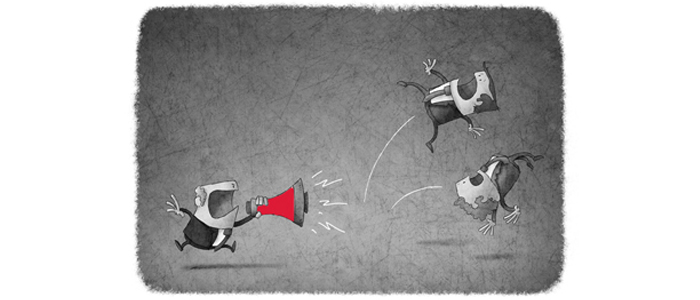It’s a common mistake to think leadership is defined by formal authority – a ‘perk’ that comes with your job title. But formal authority is overrated as a route to imposing your will on others!
Many senior leaders and managers are so task oriented that they put the work to be done and their authority as boss at the heart of what they do and either assume they can ignore the human aspects of working with others or never bother to acquire the skills.
But most people don’t want your authority to be the be-all and end-all of the relationship. They want a personal, human connection, an emotional link. They want you to care about them as individuals and encourage their growth and development. This kind of human relationship is a key factor in determining your employees’ level of engagement with the work.
We know of a choir director, a brilliant, professional man so pressed for time that he assumed the choir, which he had recently taken over, shared his exclusive interest in the quality of the music they produced. His opening gambit at rehearsals became, “there’s no time for chit chat – let’s get on with it”. He never opened up to people about himself or asked about their lives and interests – that is, until the choir members rose up and expressed, through an intermediary, that they hated how he treated them. They wanted a real human connection with him, even if he was “the leader.”
What’s wrong with people?!
Most leaders eventually discover that the pips on their shoulder don’t count for much in influencing people and getting results. Why is this? You may think people are being perverse or stubborn, but there are many reasons why they might not always follow your instructions:
- They disagree with you. They think there’s a better way and feel free to exercise their own judgment.
- They think something else is more important. It’s up to you to set deadlines and make your priorities clear if you want to persuade them otherwise.
- They don’t understand what you want. Most work today requires some judgment and thought; it’s almost impossible to give instructions specific enough to eliminate all misunderstanding or cover every contingency. You need to trust people to fill in the gaps.
- They find circumstances have changed, invalidating your directions and forcing them to improvise.
- They dislike being bossed around. Peremptory orders given with a tone of voice or choice of words that’s belittling invite only minimal compliance or subtle disobedience. Some people are especially sensitive to ‘being bossed around’; they bring to work a history of troubled dealings with authority figures, which they apply to you and any instructions you give.
- People may have a view of authority that differs from yours. They may bring to work generational or cultural attitudes that lead them to distrust and question authority and make them less likely to comply. This isn’t personal. It’s simply a different point of view that you and they will need to work through. As companies and work groups become more diverse, these differences will appear more often.
- People may not comply because they’re confused. The growing complexity of the workplace and more fluid organisational structures with multiple bosses and temporary teams can complicate and blur lines of authority. Your employees may be confused by what seem to them conflicting demands and expectations.
- Finally, you may be too far away. In virtual teams with members spread far apart, distance diminishes the ability of formal authority to create compliance. It’s easy to forget about a boss 3,000 miles away, especially when there’s another just down the hall.
All of these reasons mean your formal authority is at best an uncertain means of influence and by itself cannot generate people’s commitment and inspire them to use their initiative. You can command how your people spend their time, even where they direct their attention, but you cannot decree what’s essential for good work – you must win their commitment by winning over their heads and hearts.
